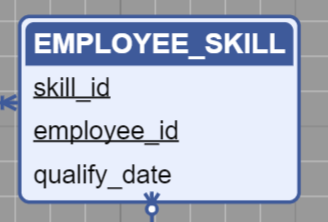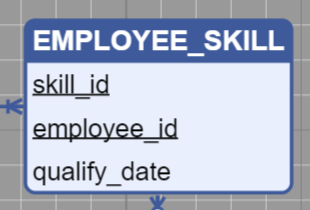I have a dilemma; I can link two nodes but can’t move the nodes on the diagram, or I can move the nodes on the diagram but can’t link two nodes. Is it possible to be able to do both? I found something that works somewhat, but to link nodes I need to click a one pixel border of the node and drag which is nearly impossible. Here is my code:
// creates the node template for each entity
fileDiagram.nodeTemplate =
$(go.Node, "Auto",
{
defaultStretch: go.GraphObject.Horizontal,
selectionAdorned: true,
layoutConditions: go.Part.LayoutStandard & ~go.Part.LayoutNodeSized
},
// binds the location of the node
new go.Binding("location", "location").makeTwoWay(),
// creates the entity
$(go.Panel, "Auto",
$(go.Shape, "Rectangle",
{
fill: "#eaeffd",
stroke: "#3c599b",
strokeWidth: 2,
portId: "",
background: "transparent",
// allows links to/from all sides
fromSpot: go.Spot.AllSides,
toSpot: go.Spot.AllSides,
// allows drawing links from or to this port
fromLinkable: true,
toLinkable: true,
// allows drawing links within the same node
fromLinkableSelfNode: true,
toLinkableSelfNode: true,
// allows duplicate linking
fromLinkableDuplicates: true,
toLinkableDuplicates: true,
cursor: "pointer"
},
// sets the port for binding between two nodes
new go.Binding("portId", "name"),
new go.Binding("figure", "figure").makeTwoWay()
)
),
// creates the node table
$(go.Panel, "Vertical",
$(go.Panel, "Auto",
// stretches the header of the table to fill the node
{
stretch: go.GraphObject.Horizontal
},
// sets the fill and stroke of the header of the node
$(go.Shape, "RoundedTopRectangle",
{
fill: "#3c599b",
stroke: null
}
),
// $(go.RowColumnDefinition, { row: 1, separatorStroke: "#3c599b" }),
// sets the header text style and grabs the text from the binding
$(go.TextBlock,
{
name: "ENTITY",
row: 0,
alignment: go.Spot.Center,
margin: 3,
stroke: "white",
textAlign: "center",
font: "bold 12pt sans-serif",
cursor: "text",
editable: true
},
new go.Binding("text", "key", function(key) { return key.toUpperCase() }).makeTwoWay()
)
),
// sets the attributes row
$(go.Panel, "Table",
new go.Binding("itemArray", "attributes"),
{
name: "ATTRIBUTES",
row: 1,
minSize: new go.Size(100, 10),
stretch: go.GraphObject.Horizontal,
defaultAlignment: go.Spot.Left,
defaultColumnSeparatorStroke: "#3c599b",
cursor: "pointer",
itemTemplateMap: itemTemplateMap
}
)
)
);
Here is an image:


